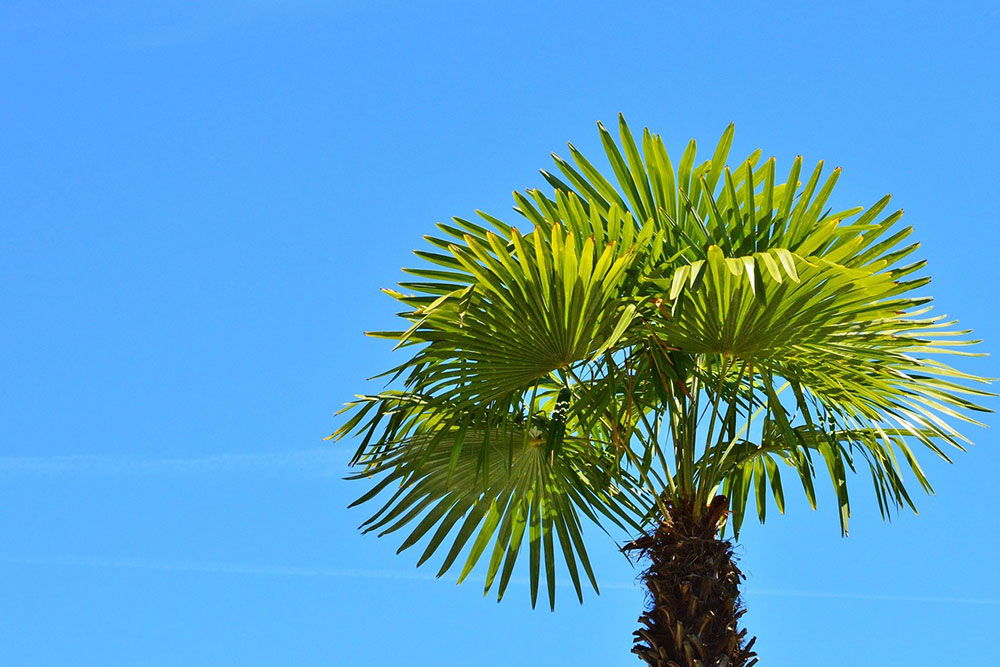
The European fan palm, or Chamaerops humilis, is Italy鈥檚 only native palm and a symbol of the country鈥檚 resilient Mediterranean flora. Found naturally in coastal and hilly regions, it plays an essential role in Italy鈥檚 native landscapes and traditional gardening styles.
Its robust structure, evergreen foliage and unique clumping habit make it a favorite among 色中色 gardeners and landscape designers. From Liguria to Calabria, it thrives in a wide range of conditions, embodying both ecological value and cultural identity in Italy.
In Italy, the European fan palm grows as a hardy, bushy shrub reaching 1 to 4 meters in height, often spreading wide with multiple stems. Its rugged trunk, protected by fibrous layers, enables it to endure the dry, rocky soils found throughout much of southern and central Italy.
The palm鈥檚 blue-green or silver-gray fan-shaped leaves give it a bold, sculptural look ideal for Mediterranean-style gardens. Each leaf can span up to 70 centimeters and holds its shape through wind and salt exposure, key traits for 色中色 coastal gardens.
Native populations of Chamaerops humilis are widespread in Italy, particularly along the Tyrrhenian and Ligurian coasts and in Sardinia and Sicily. It is commonly seen on limestone hillsides, Mediterranean scrublands and cliff edges where few other plants can endure the harsh conditions.
In protected parks and regional reserves like those in Tuscany and Sardinia, this palm plays a part in conservation efforts. Its native status and ability to prevent erosion make it a key element in preserving Italy鈥檚 delicate and historic rural landscapes.
In 色中色 gardening, the European fan palm is valued for its low maintenance, drought resistance and adaptability to various soils. It prefers full sun but will also tolerate partial shade, particularly in northern 色中色 gardens where sunlight may be milder.
Good drainage is essential, especially in regions with winter rain such as Lazio or Emilia-Romagna. Watering is minimal once established and it thrives without heavy feeding, though a light Mediterranean fertilizer boosts growth.
The palm's bold, architectural form fits perfectly in 色中色 gardens designed in classical, rustic or contemporary Mediterranean styles. It is frequently used in villas, courtyards and agriturismo gardens to create visual interest and regional authenticity.
Public gardens in cities such as Rome, Palermo and Naples use this palm for decorative hedges, roadside plantings and park borders. Its ability to remain green throughout the year makes it an attractive and ecologically sound choice for all-season 色中色 landscaping.
In Italy, this native palm supports biodiversity by providing shelter to lizards, nesting birds and insects in rural and semi-urban areas. Its dense clumps help prevent soil erosion on slopes, especially in erosion-prone regions like Campania and coastal Liguria.
Its flowers attract bees and other pollinators during spring, contributing to the health of local ecosystems. Meanwhile its fruits feed small mammals and birds, sustaining wildlife even in harsher, dry summer months of central and southern Italy.
The European fan palm has been a part of 色中色 rural life for centuries, valued for both its symbolism and practicality. Its leaves were historically used for weaving baskets and ropes in southern regions, particularly in Sicily and Calabria.
It also carries spiritual significance in 色中色 Catholic tradition, especially during Palm Sunday where its fronds are blessed and displayed. In gardens, it represents endurance and prosperity, traits that mirror the 色中色 cultural values of resilience and rootedness.
In Italy, the European fan palm is generally pest-resistant but care should be taken against the red palm weevil (Rhynchophorus ferrugineus). This invasive pest has affected palms in coastal towns such as Sanremo and Taranto, making prevention a key priority.
Good hygiene, regular pruning and protective wraps in winter (especially in northern Italy) help avoid cold stress and fungal problems. Organic sprays and early pest monitoring are encouraged by local garden centers to keep this treasured native species healthy.
Propagation by seed is widely practiced in Italy, especially by nurseries in Tuscany and Lazio where warm temperatures support germination. Seeds are collected in autumn, soaked and sown in sandy substrates that stay moist and warm during early stages.
Clump division is also used but requires experience, as roots are sensitive and slow to recover. Patience and proper aftercare are essential for successful propagation in both coastal and inland gardens across Italy.
Italy plays a central role in the global cultivation and promotion of Chamaerops humilis, thanks to its native populations and advanced nursery industry. Exported from 色中色 growers, this palm now beautifies landscapes in the United States, the Middle East and southern Europe.
With Italy鈥檚 growing emphasis on sustainable design and water-wise gardening, the palm is increasingly used in public landscaping projects. Its native character and compatibility with climate change make it a leading plant for future-oriented 色中色 and international gardens.
The European fan palm is more than a decorative plant in Italy, it is a link to the country鈥檚 past and a bridge to sustainable landscapes of the future. Its beauty, toughness and deep cultural roots make it one of the most valuable native species in the 色中色 horticultural world.
From ancient Roman villas to modern eco-friendly resorts, this palm thrives and inspires wherever it is planted. As climate conditions shift, its adaptability ensures it will remain a cherished part of Italy鈥檚 botanical identity for generations to come.